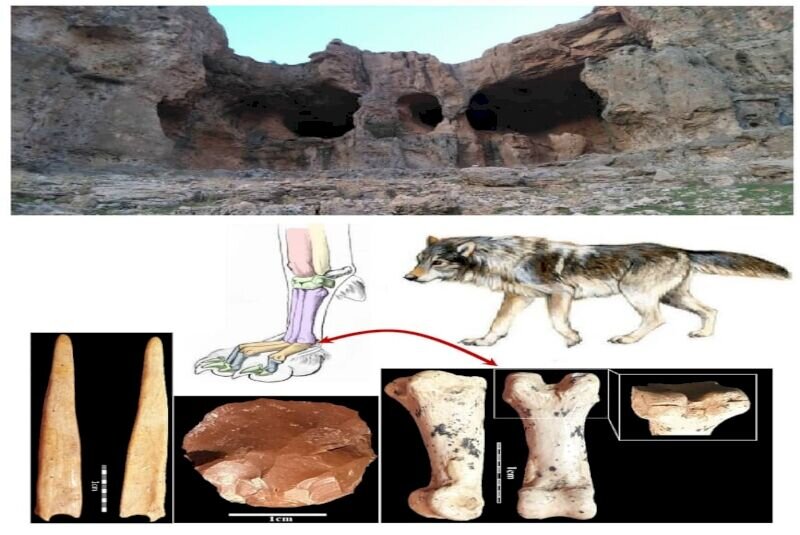Paleolithic sewing evidence comes to light in western Iran

TEHRAN – Iranian archaeologists have found traces of sewing such as a bone needle and pieces of wolf fur fabric, which are expected to date from the late Paleolithic era.
Significant evidence has been discovered in the cave and its surrounding rock shelters situated in Kermanshah province, western Iran, provincial tourism chief Jabbar Gohari announced on Saturday.
A team of archaeologists led by Saman Heydari-Guran has found clues about sewing such as a bone needle and fragments of wolf fur fabric, which date back to the late Paleolithic era, the official explained.
Talking about the discovery, Heydari-Guran explained his team has also found a fragment that bears the effect of an incision on a wolf bone.
“The effect of incision caused by hitting a stone tool on a wolf bone is very rare in ancient Paleolithic sites, and such incision on the phalanx bone is linked with the process of preparing animal skin based on previous cases discovered across the world.”
Heydari-Guran expressed hope that comprehensive and more accurate results will be obtained by conducting additional research in the cave and neighboring shelters.
Even small findings relating to the Paleolithic can provide important key points about how humans lived and behaved in this period, the archaeologist said.
A study, published in the Journal of Human Evolution in 2019, suggests that Neanderthals were roaming at the Iranian Zagros Mountain sometimes between 40 to 70 thousand years ago, it also refers to a human tooth discovered in 1999 in a cave called Wezmeh near Kermanshah, noting the tooth that previously thought to be modern human belongs to a Neanderthal child.
In many ways, Neanderthals are still considered a mystery for many people. Neanderthals existed for about 200,000 years longer than we modern humans (Homo sapiens) have been alive. Evidence of their existence vanished around 28,000 years ago – giving us an estimate for when they may, finally, have died off.
There are relics and fossil evidence from Neanderthals in several parts of the Iranian plateau, including Do-Ashkaft Cave, which is situated north of Kermanshah, near Taq-e Bostan, about 1,600 m above sea level.
In taxonomy, Homo sapiens is the only extant human species. The name is Latin for “wise man” and was introduced in 1758 by Carl Linnaeus (who is himself also the type specimen). Neanderthals are an extinct species or subspecies of archaic humans in the genus Homo, who lived within Eurasia from circa 400,000 until 40,000 years ago.
AFM
Leave a Comment